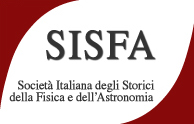Speaker
Description
The concept of exchange interactions was introduced by W. Heisenberg in 1926 in connection with the quantum mechanical description of systems of identical particles, and it was soon fruitfully applied to many problems in atomic, molecular, and condensed matter physics. After the discovery of the neutron in 1932, it found application also in nuclear physics, with the theories of nuclear structure developed, among others, by Heisenberg and E. Majorana. Then, it entered the domain of quantum field theory, leading to the modern understanding of fundamental forces as mediated by virtual particle exchange. An important intermediate step in this development is Fermi's theory of beta-decay. H. Yukawa and S. Tomonaga, who already had been exposed to the principles of the new quantum mechanics by attending a cycle of lectures given by Heisenberg and Dirac in Japan in 1929, and spent long periods in Europe, were strongly influenced by these works. Within a few years, Yukawa conceived his crucial idea of an interaction mediated by virtual mesons, while Tomonaga investigated the range of proton-neutron interactions. In this contribution, we reconstruct the role played by Japanese physicists in building the modern understanding of fundamental forces in the 1930s and relate it to research performed in Europe.

